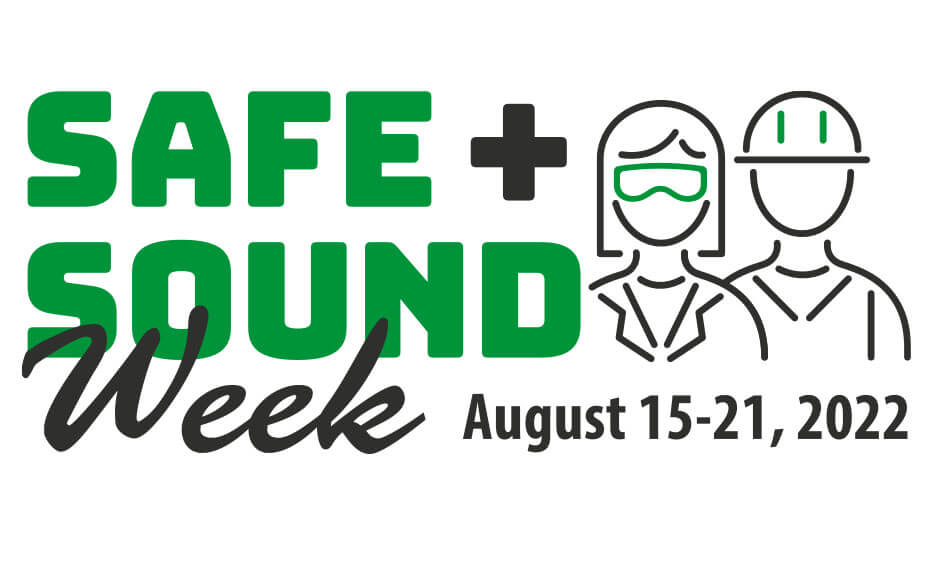This week, August 15 to 21, 2022, Columbia Steel is taking note of “Safe + Sound Week”, part of OSHA’s on-going effort to encourage every workplace to have a health and safety program.
Those of us working in heavy industry are well familiar with messaging for particular areas of safety awareness — everything from steel toe shoes and proper headgear, to broader topics like lock out/tag out procedures, overhead crane operation, forklift operation, and confined space safety. And of course new and current concerns, such as COVID-19, heat safety, wildfire smoke, just to name a few, must be a part of an effective, evolving health and safety culture.
But how often do we give thought to the professionals who develop and implement these programs? We asked Dave Faust, Columbia’s EH&S Manager, and Molly Lowe, Safety Intern, what it takes to create, train, document, and maintain the many aspects of a wide-ranging effort that must meet the safety needs of over 200 employees.
Q: What is a typical day like for the Columbia safety team?
A: A typical day in safety is never the same! A day might start by supplying safety reports to management in the morning, followed by updating annual training to ensure that employees are getting the best knowledge possible… then in the afternoon, researching the latest OSHA mandates (while making sure to read all of the fine print) and finally finishing up the day by confirming that supplies required for upcoming projects are available.
Other typical safety tasks include daily audits for work area hazards, including walking paths, crane rigging, tools, and equipment guarding. The safety team discusses any areas of concerns with production employees, and uses insights gained from these conversations to create possible ways to make their jobs safer.
As you can see, we cover a lot of ground on an average day. Some days we’re in the classroom, training new hires, filing all of their paperwork, and ensuring they are entered into the company’s documentation system. Other days we’re out and around the facility to conduct audits — for example, to ensure that employees wear their respirators properly and when required.
Q: As a health and safety professional, what are some of the most challenging aspects of your job?
A: Safety is not always obvious. Workers may find rules frustrating or unnecessary at times. We need to be able to convey that these rules are not just excessive regulations to make our lives harder. Sharing true stories, whether of safety-related events that happened to a co-worker, or at another similar manufacturing facility, is extremely useful in helping people understand why safety procedures exist. Asking employees about their own personal experiences can provide meaningful and heartfelt stories that others can identify with and learn from.
For EH&S management, safety doesn’t stop at the end of the shift — the team can often be at the beck and call of others experiencing safety issues. All employee concerns deserve the same respectful, problem-solving response, regardless of whether a given situation seems critical at the present moment.
Q: What advice would you give to someone who is thinking about a career in health and safety?
A: Safety works best with collaboration. Asking others for their input and experiences helps to create effective policies, programs, and audits. As a Safety Intern, my goal is to keep our safety procedures current and integrated into our ever-changing company culture. Each generation has its own idea of what safety should be all about, and my goal is to help all our employees, regardless of their experience or views, to see safety as essential to their health and well-being.
Learn more at: https://www.osha.gov/safeandsoundweek
